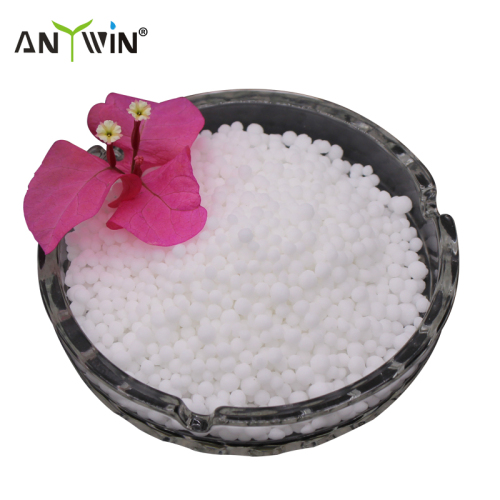Storage recommendations for different fertilizers
Different fertilizers have different characteristics. Some fertilizers can be stored for a long time, but some fertilizers will be stored for a long time, and there will be the following situations: ①The fertilizer is damp and hardened; ②The fertilizer efficiency is volatilized or reduced; ③The total amount of fertilizer is reduced but the fertilizer efficiency remains unchanged. Wait. The following is an example of several common fertilizers.

1. Urea
Urea is stored in a cool and dry environment for many years, and the fertilizer efficiency does not change much, and does not affect normal use. Urea is afraid of water and tide during the storage process. If it gets wet or splashed with water, urea will cause weight loss due to water solubility. In addition, high temperature and direct sunlight should be avoided during the storage of urea, otherwise the volatilization of nitrogen will be accelerated.

2. Calcium superphosphate
The shelf life of calcium superphosphate is generally within 1 year, and the fertilizer efficiency will gradually decrease after more than half a year. This is because many phosphate rock powders used in the production of calcium superphosphate contain a certain amount of iron and aluminum components. After half a year, the calcium carbonate will be slowly converted into insoluble iron phosphate and aluminum phosphate, resulting in a decrease in fertilizer efficiency. If the phosphate rock powder used in the production of calcium superphosphate contains less iron and aluminum, it is also more suitable for long-term storage.
In addition, calcium superphosphate is corrosive to a certain extent. It should be kept away from metals such as copper and iron, and it cannot be stored with the seeds, otherwise the germination rate of the seeds will be easily reduced.
3. Ammonium bicarbonate
Ammonium bicarbonate is placed in a cool and ventilated place, away from fire, high temperature, acidic substances, calcium hydroxide, sodium hydroxide, etc., and can be stored for a long time. Ammonium bicarbonate has strong water absorption and is also afraid of high temperature. When it is exposed to high temperature and moisture, it will volatilize a large amount of ammonia nutrients, which will reduce the weight of fertilizer, but the fertilizer efficiency basically does not change much. However, when stored with acidic substances, it will react with acid, causing ammonium bicarbonate to deteriorate. When it encounters hydrochloric acid, it will also produce water, carbon dioxide and ammonium chloride, but ammonium chloride can also continue to be used as fertilizer.
4. Diammonium Phosphate
Diammonium phosphate is a commonly used compound fertilizer with relatively high nitrogen and phosphorus content. Because of its good water solubility, it has the characteristics of moisture absorption and moisture resistance during storage. When exposed to rain or moisture, it will decompose, not only will nitrogen volatilize, but also become ammonium dihydrogen phosphate.
In addition, diammonium phosphate is also afraid of high temperature. If the storage environment temperature reaches 30 degrees or above, the ammonia in diammonium phosphate will not only volatilize, but also slowly convert into monoammonium phosphate.
5. Potash fertilizer
Potassium sulfate and potassium chloride are probably the most commonly used potash fertilizers. However, because these two kinds of potash fertilizers have very stable chemical properties, they can be stored for a long time. Even if they are accidentally drenched in water or become hardened by moisture, you don’t have to worry too much. Just break the fertilizer agglomerates and continue to use them. There will be no loss of fertilizer efficiency.

6. Microbial fertilizer
Because the strains in the microbial fertilizer have a certain activity limitation period, generally about 1-2 years, after the limitation period is exceeded, the strains basically lose their activity, and they basically have no effect when they are used in the ground. Bacterial fertilizers generally have a clear expiration date on the outer packaging bag. Bacteria with a shelf life of more than two years should be purchased with caution. You can pay more attention when purchasing and using bacterial fertilizers.
In addition, because the bacteria can survive in a suitable environment, when storing the bacterial fertilizer, it can be stored in a low temperature environment of about 4-10 degrees, and pay attention to ventilation and avoid light.
Post time: May-25-2022